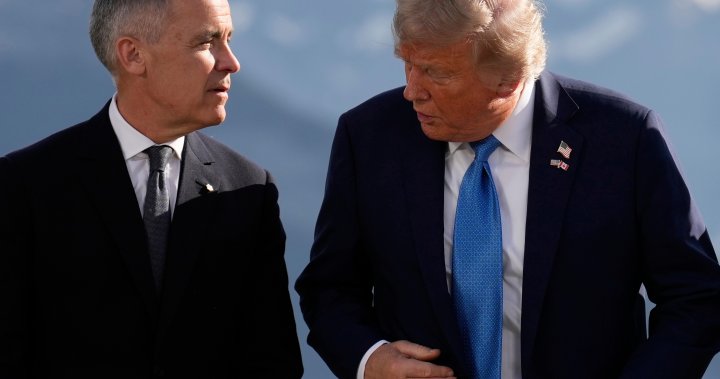With the target date for a new Canada-U.S. trade and security deal less than two weeks away, both sides will aim for a “long-term” deal, one former White House trade official told Global News.
Brian Janotivz, former White House Economic Counsel and former official with the U.S. Trade Representative (USTR), said there’s a sense of “urgency” as both sides try to find a “sustainable” solution.
“I think the commitment to the integration of the North American market helps. It makes it so that all of the parties have an interest in building something that’s sustainable long-term. It sort of works for everybody,” he said.
Janovitz said this only fast-tracks the negotiations on the Canada-U.S.-Mexico Free Trade Agreement (CUSMA), which was up for review in 2026.
“Those talks had already started and so you know, for something like this, it will inject a sense of urgency into those conversations,” he said.
In an interview with Global News on Saturday, Prime Minister Mark Carney said he’s staying “nimble,” given the U.S. has “multiple” objectives for its trade talks with various countries.

Get breaking National news
For news impacting Canada and around the world, sign up for breaking news alerts delivered directly to you when they happen.
“Some of it’s strategic competition with China. Sometimes it’s just whether or not they can have a trade balance,” he said. “Some of it’s about revenue, for their budget, and of course it’s jobs for workers, (and) also issues around the border.”
On Monday, U.S. President Donald Trump signed an executive order that extended the deadline for negotiations with countries that are subject to Trump’s so-called “Liberation Day” tariffs.
He set a 25 per cent tax on goods imported from Japan and South Korea, as well as new tariff rates on a dozen other nations that would go into effect on Aug. 1.
Imports from Myanmar and Laos would be taxed at 40 per cent, Cambodia and Thailand at 36 per cent, Serbia and Bangladesh at 35 per cent, Indonesia at 32 per cent, South Africa and Bosnia and Herzegovina at 30 per cent and Kazakhstan, Malaysia and Tunisia at 25 per cent.
Carney has said he is aiming to reach a deal with the U.S. on trade and security by July 21.
Janovitz said while the Trump administration’s aims with placing tariffs on trading partners — such as incentivizing domestic manufacturing or putting pressure on trading partners to negotiate — will be front and centre, the White House will also want to guard against the negative impact of tariffs on the U.S.
This includes increased costs for American manufacturers and higher prices for consumers.
“The administration is in a position of having both to balance competing objectives, but also to respond in real time to different developments within the market,” he said.
He added that Trump directly negotiating individual trade deals and removing Congress from the process was a double-edged sword.
“To move the congressional process would be a lengthier one. In some way, it introduces a level of stability to it, but it also introduces a slower pace (to the negotiations),” he said.
— With files from Global News’ Jackson Proskow, Reggie Cecchini and The Associated Press
Read the full article here
